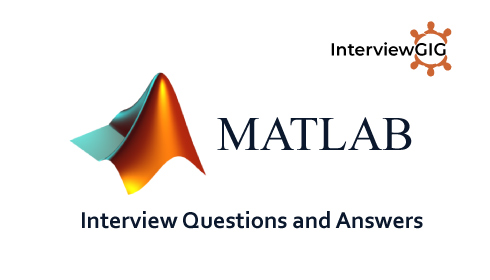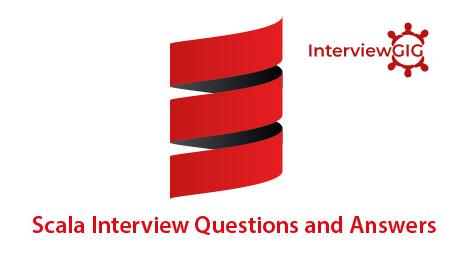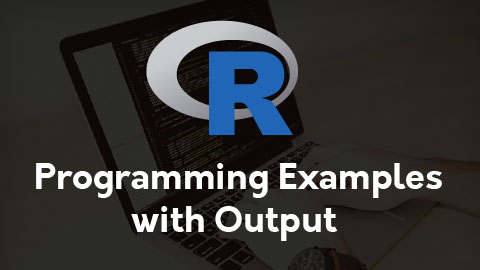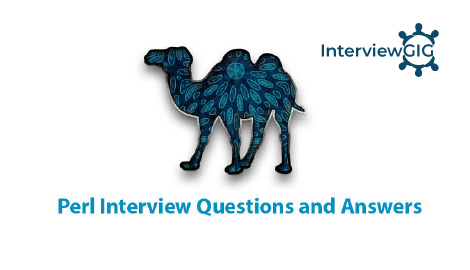Describe the phases of clinical trials?
These are the following four phases of the clinical trials:
Phase 1: Test a new drug or treatment to a small group of people (20-80) to evaluate its safety.
Phase 2: The experimental drug or treatment is given to a large group of people (100-300) to see that the drug is effective or not for that treatment.
Phase 3: The experimental drug or treatment is given to a large group of people (1000-3000) to see its effectiveness, monitor side effects and compare it to commonly used treatments.
Phase 4: The 4-phase study includes the post marketing studies including the drug’s risk, benefits etc.
Describe the validation procedure? How would you perform the validation for TLG as well as analysis data set?
Validation procedure is used to check the output of the SAS program generated by the source programmer. In this process validator write the program and generate the output. If this output is same as the output generated by the SAS programmer’s output then the program is considered to be valid.
We can perform this validation for TLG by checking the output manually and for analysis data set it can be done using PROC COMPARE.
How would you perform the validation for the listing, which has 400 pages?
It is not possible to perform the validation for the listing having 400 pages manually. To do this, we convert the listing in data sets by using PROC REPORT and then after that we can compare it by using PROC COMPARE.
Can you use PROC COMPARE to validate listings? Why?
Yes, we can use PROC COMPARE to validate the listing because if there are many entries (pages) in the listings then it is not possible to check them manually. So in this condition we use PROC COMPARE to validate the listings.
How would you generate tables, listings and graphs?
We can generate the listings by using the PROC REPORT. Similarly, we can create the tables by using PROC FREQ, PROC MEANS, and PROC TRANSPOSE and PROC REPORT. We would generate graph, using proc Gplot etc.
How many tables can you create in a day?
Actually, it depends on the complexity of the tables if there are same type of tables then, we can create 1-2-3 tables in a day.
What are all the PROCS have you used in your experience?
I have used many procedures like proc report, proc sort, proc format etc. I have used proc report to generate the list report, in this procedure I have used subjid as order variable and trt_grp, sbd, dbd as display variables.
Describe the data sets you have come across in your life?
I have worked with demographic, adverse event, laboratory, analysis and other data sets.
How would you submit the docs to FDA? Who will submit the docs?
We can submit the docs to FDA by e-submission. Docs can be submitted to FDA using Define.pdf or define.Xml formats. In this doc we have the documentation about macros and program and E-records also. Statistician or project manager will submit this doc to FDA.
What are the docs do you submit to FDA?
We submit ISS and ISE documents to FDA.
Can u share your CDISC experience? What version of CDISC SDTM have you used?
I have used version 3.1.1 of the CDISC SDTM.
Tell me the importance of the SAP?
This document contains detailed information regarding study objectives and statistical methods to aid in the production of the Clinical Study Report (CSR) including summary tables, figures, and subject data listings for Protocol. This document also contains documentation of the program variables and algorithms that will be used to generate summary statistics and statistical analysis.
Tell me about your project group? To whom you would report/contact?
My project group consisting of six members, a project manager, two statisticians, lead programmer and two programmers.
I usually report to the lead programmer. If I have any problem regarding the programming I would contact the lead programmer.
If I have any doubt in values of variables in raw dataset I would contact the statistician. For example, the dataset related to the menopause symptoms in women, if the variable sex having the values like F, M. I would consider it as wrong; in that type of situations I would contact the statistician.
New Updated Top 25 Clinical SAS Interview Questions and Answers with Scenarios 2024
Explain SAS documentation?
SAS documentation includes programmer header, comments, titles, footnotes etc. Whatever we type in the program for making the program easily readable, easily understandable are in called as SAS documentation.
How would you know whether the program has been modified or not?
I would know the program has been modified or not by seeing the modification history in the program header.
What is Project status meeting?
It is a planetary meeting of all the project managers to discuss about the present Status of the project in hand and discuss new ideas and options in improving the Way it is presently being performed.
Describe clin-trial data base and oracle clinical?
Clintrial, the market’s leading Clinical Data Management System (CDMS). Oracle Clinical or OC is a database management system designed by Oracle to provide data management, data entry and data validation functionalities to Clinical Trials process.18. Tell me about MEDRA and what version of MEDRA did you use in your project?Medical dictionary of regulatory activities. Version 10
Describe SDTM?
CDISC’s Study Data Tabulation Model (SDTM) has been developed to standardize what is submitted to the FDA.
What is CRT?
Case Report Tabulation, whenever a pharmaceutical company is submitting an NDA, conpany has to send the CRT’s to the FDA.
What is annotated CRF?
Annotated CRF is a CRF (Case report form) in which variable names are written next the spaces provided to the investigator. Annotated CRF serves as a link between the raw data and the questions on the CRF. It is a valuable tool for the programmers and statisticians.
What do you know about 21CRF PART 11?
Title 21 CFR Part 11 of theCode of Federal Regulations deals with the FDA guidelines on electronic records and electronic signatures in the United States. Part 11, as it is commonly called, defines the criteria under which electronic records and electronic signatures are considered to be trustworthy, reliable and equivalent to paper records.
What are the contents of AE dataset? What is its purpose?
What are the variables in adverse event datasets?The adverse event data set contains the SUBJID, body system of the event, the preferred term for the event, event severity. The purpose of the AE dataset is to give a summary of the adverse event for all the patients in the treatment arms to aid in the inferential safety analysis of the drug.
What are the contents of lab data? What is the purpose of data set?
The lab data set contains the SUBJID, week number, and category of lab test, standard units, low normal and high range of the values. The purpose of the lab data set is to obtain the difference in the values of key variables after the administration of drug.
How did you do data cleaning? How do you change the values in the data on your own?
I used proc freq and proc univariate to find the discrepancies in the data, which I reported to my manager.
Have you created CRT’s, if you have, tell me what have you done in that?
Yes, I have created patient profile tabulations as the request of my manager and and the statistician. I have used PROC CONTENTS and PROC SQL to create simple patient listing which had all information of a particular patient including age, sex, race etc.
Have you created transport files?
Yes, I have created SAS Xport transport files using Proc Copy and data step for the FDA submissions. These are version 5 files. we use the libname engine and the Proc Copy procedure, One dataset in each xport transport format file. For version 5: labels no longer than 40 bytes, variable names 8 bytes, character variables width to 200 bytes. If we violate these constraints your copy procedure may terminate with constraints, because SAS xport format is in compliance with SAS 5 datasets.
Libname sdtm “c:\sdtm_data”;Libname dm xport “c:\dm.xpt”; Proc copy; In = sdtm; Out = dm; Select dm; Run;
How did you do data cleaning? How do you change the values in the data on your own?
I used proc freq and proc univariate to find the discrepancies in the data, which I reported to my manager.
What is Verification?
The purpose of the verification is to ensure the accuracy of the final tables and the quality of SAS programs that generated the final tables. According to the instructions SOP and the SAP I selected the subset of the final summary tables for verification.
E.g Adverse event table, baseline and demographic characteristics table.The verification results were verified against with the original final tables and all discrepancies if existed were documented.
What is Program Validation?
Its same as macro validation except here we have to validate the programs i.e according to the SOP I had to first determine what the program is supposed to do, see if they work as they are supposed to work and create a validation document mentioning if the program works properly and set the status as pass or fail.Pass the input parameters to the program and check the log for errors.
What do you lknow about ISS and ISE, have you ever produced these reports?
ISS (Integrated summary of safety): Integrates safety information from all sources (animal, clinical pharmacology, controlled and uncontrolled studies, epidemiologic data). “ISS is, in part, simply a summation of data from individual studies and, in part, a new analysis that goes beyond what can be done with individual studies.”ISE (Integrated Summary of efficacy)ISS & ISE are critical components of the safety and effectiveness submission and expected to be submitted in the application in accordance with regulation.
FDA’s guidance Format and Content of Clinical and Statistical Sections of Application gives advice on how to construct these summaries. Note that, despite the name, these are integrated analyses of all relevant data, not summaries.
What are the Roles and responsibilities Clinical SAS?
Programmer: Develop programming for report formats (ISS & ISE shell) required by the regulatory authorities.Update ISS/ISE shell, when required.
Clinical Study Team: Provide information on safety and efficacy findings, when required.Provide updates on safety and efficacy findings for periodic reporting.
Study Statistician Draft ISS and ISE shell.Update shell, when appropriate. Analyze and report data in approved format, to meet periodic reporting requirements.
Explain Types of Clinical trials study you come across?
Single Blind Study When the patients are not aware of which treatment they receive.
Double Blind Study When the patients and the investigator are unaware of the treatment group assigned.
Triple Blind Study Triple blind study is when patients, investigator, and the project team are unaware of the treatments administered.
What are the domains/datasets you have used in your studies?
Demog Adverse Events Vitals ECG Labs Medical History PhysicalExam etc
Can you list the variables in all the domains?
Demog: Usubjid, Patient Id, Age, Sex, Race, Screening Weight, Screening Height, BMI etc
Adverse Events: Protocol no, Investigator no, Patient Id, Preferred Term, Investigator Term, (Abdominal dis, Freq urination, headache, dizziness, hand-food syndrome, rash, Leukopenia, Neutropenia) Severity, Seriousness (y/n), Seriousness Type (death, life threatening, permanently disabling), Visit number, start time, Stop time, Related to study drug?
Vitals: Subject number, Study date, Procedure time, sitting blood pressure, Sitting Cardiac Rate, Visit number, Change from baseline, Dose of treatment at time of vital sign, Abnormal (yes/no), BMI, Systolic blood pressure, Diastolic blood pressure.
ECG: Subject no, Study Date, Study Time, visit no, PR interval (msec), QRS duration (msec), QT interval (msec), QTc interval (msec), Ventricular Rate (bpm), Change from baseline, Abnormal.
Labs: Subject no, Study day, Lab parameter (Lparm), lab units, ULN (upper limit of normal), LLN (lower limit of normal), visit number, change from baseline, Greater than ULN (yes/no), lab related serious adverse event (yes/no). Medical History: Medical Condition, Date of Diagnosis (yes/no), Years of onset or occurrence, Past condition (yes/no), Current condition (yes/no).
PhysicalExam: Subject no, Exam date, Exam time, visit number, Reason for exam, Body system, Abnormal (yes/no), Findings, Change from baseline (improvement, worsening, no change), Comments





